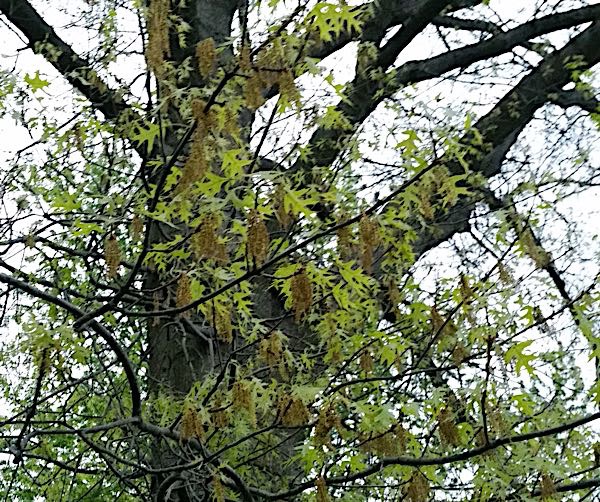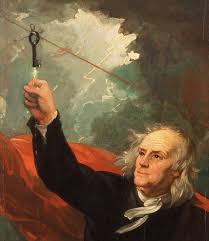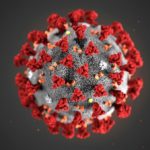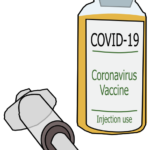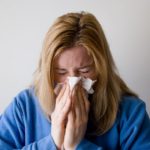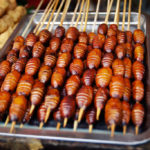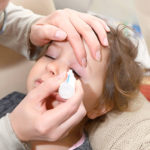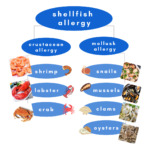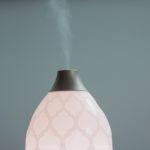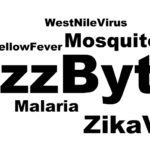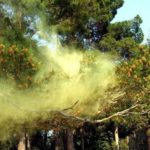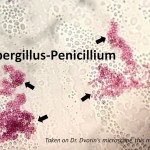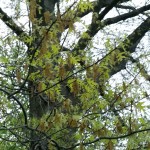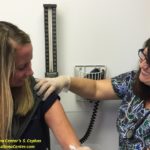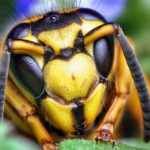#SaveAllergyShots, allergies, allergy, allergy shots, allergy symptoms, catkins, Dr. Donald Dvorin, local pollen count, oak tree pollen, pollen, pollen count, sinus headache, spring, The Asthma Center, tree pollen
Grains against the Rain: More Tree Pollen For NJ & PA
“Today is yet another example of how weather, pollen, and allergy symptoms are all related,” says Dr. Dvorin as he finished counting today’s air sample.
“If you have allergies, you feel it. Tree pollen increased—it’s the height of the season, conditions were dry most of yesterday even though it was cloudy, and then there were those thunderstorms overnight,” he explains.
“I’m congested.
“Scratchy throat and I feel terrible.”
“My head, my head…Sinus Congestion…”
Co-workers, family members and friends are lamenting about their symptoms. Recent comments posted on The Asthma Center’s Facebook page echo this sentiment:
“I’m suffering horribly!”
“Feels like a hangover without any of the fun.”
“My head may blow up.”
Tree pollen increased today and remains very high. In the Delaware Valley, tree pollen counts of 60-999 pollen grains per cubic meter of air in a 24 hours period are very high and may cause moderate to severe symptoms. Compared to yesterday’s tree pollen count, overall volume increased approximately 25%.
Oak Tree Pollen continues to dominate the count and accounts for 76%-81% of all tree pollen in the air in New Jersey and Pennsylvania. There’s no shortage of Oak Trees in our area–pictured above is a Montgomery County Oak Tree with dangling catkins. To learn more about Oak catkins, read the recent pollen blog Shut the Door, Seal the Windows: Catkins Are Here
Birch, Mulberry and Pine comprise another 10%-12%. Other kinds of tree pollen present in the air include Walnut, Sycamore, Hickory/Pecan, and Sweet Gum.
Grass pollen is very low. Outdoor mold spores decreased slightly over the past 24 hours but remain high.
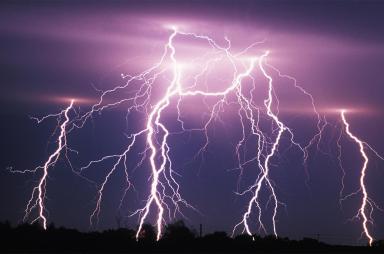 Yikes—Thunderstorms Can Mean More Pollen In the Air
Yikes—Thunderstorms Can Mean More Pollen In the Air
Sometimes, that’s true. You may have seen or been woken up last night by thunder, lightning, and periods of heavy rain in parts of the Delaware Valley. In last week’s blog, Thursday Tree Pollen Tale: Very High, Down Not Out, Dr. Dvorin discussed how weather changes like rain and falling temperatures can disturb the pollen process. Storms like those our area experienced overnight –Thunderstorms accompanied by lightning, winds and heavy rains–affect the process differently. First, winds lift, carry, and toss pollen about, sometimes violently. Lightning indicates a change in the movement of atmospheric electrical charges which may cause further anomalies in pollen release; when combined with winds, this can result in more pollen in the air with all of it traveling further. Acute asthma attacks have also been associated with thunderstorms.
What’s Ahead?
There is a light mist in the Delaware Valley, with more rain, and possibly thunderstorms, in the forecast for the next several days. We asked Dr. Dvorin again about “pollen forecasts” popular in the news and online today, some of which predicted low levels of pollen today for our region.
“They [ the pollen forecasts ] don’t seem to help,” Dr. Dvorin noted, “if you have allergies, the forecasts do not match what you feel because you’re affected by what is actually in the air.”
The accuracy and statistical correlation of pollen counts with pollen forecasts has never been proven, and that is why there has been no published, scientifically validated model for pollen forecasting.
Be sure to check back in for The Asthma Center’s daily Pollen and Mold Spore Count, the Delaware Valley’s only Official count station which is certified by the National Allergy Bureau. Subscribe to receive our daily counts by email or check out some of our other blog posts to learn more about what is in the air, how it can affect you, and what you can do about it.
What Can You Do?
“An Ounce of Prevention is Worth a Pound of Cure.” Benjamin Franklin
You may recall a story about a prominent scientist from Philadelphia (and kite experiment) who was also interested in the effects of lightning (and the movement of atmospheric electrical charges). Benjamin Franklin wore many “hats” during his lifetime, and much of his wisdom still applies today. The above quote attributed to him, for example, exemplifies what it means to be pro-active.
For those suffering from terrible allergies right now, if over-the-counter (OTC) medications are not helping, you may want to start thinking about ways to prevent “history repeating itself” next spring. For example, if you are allergic to grass pollen, Allergy Immunotherapy (Allergy Shots) or perhaps oral immunotherapy grass tablets may be helpful to get through the grass pollen season next year. If you are allergic to multiple kinds of pollen (tree, grass, ragweed, and/or other weeds), allergy shots are extremely effective in reducing the acute symptoms of nasal allergy such as sneezing and congestion (just to name two.) Allergy shots are also beneficial if you have multiple pollen allergies and experience other symptoms such as fatigue, sinus headache, mental “fogginess,” and cough, which are all symptoms often associated with severe allergies.
Get Relief-Saturday appointments are available!
The best way to manage your allergies is to find out exactly what’s causing your symptoms. The Asthma Center has 9 locations in PA & NJ with the following Saturday hours in addition to our normal Monday – Friday business hours.
- May 7 and May 14: the Mount Laurel, NJ office will be seeing patients.
- May 14: the Hamilton, NJ office will be seeing patients.
- May 14 and June 4: the Langhorne, PA office will be seeing patients.
Recent
Popular

